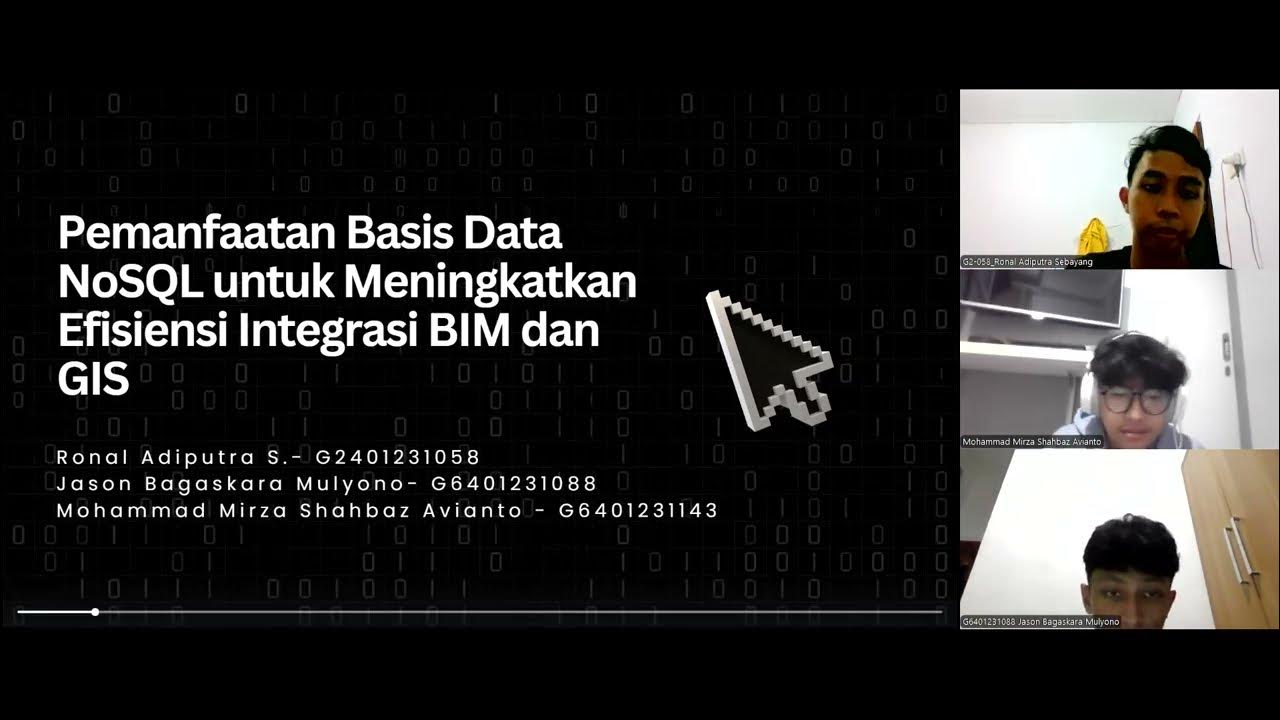Explaining 👉 Level of Information Need 👈 for BIM and 🌐 ISO 19650 Appointment Workflow (Part 2 of 3)
Summary
TLDRThis video explores the concept of Level of Information Need (LOIN) in Building Information Modeling (BIM), focusing on the importance of defining clear requirements for the right BIM at the right time. It covers key considerations like project milestones, responsibility matrices, and classification structures such as UNIclass. The session emphasizes how to structure information effectively using databases, ensuring that teams understand who is responsible for what and when. The discussion also highlights the evolving standards in BIM, aiming to balance geometry, accuracy, and documentation to create efficient workflows for better project outcomes.
Takeaways
- 😀 BIM (Building Information Modeling) is about delivering the right information at the right time by the right people, for the right reasons.
- 😀 It's important to define the purpose and goals of BIM early, such as design reviews, 3D coordination, or project handovers, to guide the modeling process.
- 😀 A structured classification system like UNIclass or UNIformat helps in clearly communicating and defining what information is required at each stage.
- 😀 The breakdown structure should involve clear responsibility mapping, with specific roles defined for team members and departments.
- 😀 Templates and classification structures can streamline information management and ensure consistency in documenting requirements.
- 😀 Clear identification of objects and element requirements within the model is key to understanding documentation and planning needs.
- 😀 The Level of Information Need (LOIN) framework enhances the understanding of geometric detail and other requirements for a BIM model, going beyond traditional LOD (Level of Detail).
- 😀 A clear distinction between the level of detail (geometry), dimensionality (2D vs. 3D), location, appearance, and parametric behavior should be made for each object in the model.
- 😀 Accuracy and reliability of information in the model should be defined, ensuring it meets project needs and expectations, whether it's preliminary or as-built.
- 😀 Managing requirements through a structured system rather than spreadsheets helps maintain clarity and ensure the correct information is communicated and tracked over time.
Q & A
What is the concept of 'Smart Lean' in BIM?
-Smart Lean in BIM refers to ensuring that the right BIM is done at the right time by the right people for the right reasons. It emphasizes defining the purpose, requirements, and milestones for BIM processes to be effective.
Why is defining the purpose of BIM important?
-Defining the purpose of BIM is critical to understanding the goals of the project. Whether it's for design review, 3D coordination, or handover, the purpose will influence the level of detail, timing, and type of information required.
What are some examples of BIM milestones in a project?
-Examples of BIM milestones include design reviews, 3D coordination, and handover. These milestones help define when specific information is required and guide the delivery of the necessary data at the right time.
What role does the 'Responsibility Matrix' play in BIM?
-The Responsibility Matrix helps clarify who is responsible for specific tasks or deliverables at different stages of the project. It is essential for organizing and tracking information responsibilities across disciplines and teams.
How does the Level of Information Need (LOIN) framework improve BIM processes?
-LOIN enhances BIM processes by offering a clearer and more structured way to define the exact information requirements for a project. It complements the Level of Detail (LOD) by adding other essential factors like accuracy, reliability, and purpose of information.
What is the difference between LOD and LOIN?
-LOD (Level of Detail) focuses on the geometric detail of objects, while LOIN (Level of Information Need) extends beyond geometry to include aspects such as accuracy, reliability, and documentation requirements, providing a more comprehensive approach to information management.
What does the term 'geometric representation' mean in the context of BIM?
-Geometric representation refers to how detailed the model's geometry is at any given point, whether it's symbolic, generic, detailed, or at fabrication level. This representation dictates how much time and effort will go into creating and updating the model.
Why is it important to consider the dimensionality of objects in BIM?
-Dimensionality (2D vs 3D) significantly affects the complexity and effort required to model and update an object. A 3D model requires more resources to create and maintain but provides a more detailed and accurate representation of the physical space.
How do classification systems like UNIclass and Uniformat contribute to BIM?
-Classification systems like UNIclass and Uniformat provide a standardized way to organize and categorize information in the BIM process. They ensure that everyone on the team is speaking the same language and helps structure the breakdown of data for clearer communication.
What is the role of documentation in the Level of Information Need framework?
-Documentation is essential in the LOIN framework to specify what type of information (e.g., warranties, contacts, barcodes) is needed for each object. It helps in tracking important details that go beyond the model's geometry, ensuring comprehensive project documentation.
Outlines

This section is available to paid users only. Please upgrade to access this part.
Upgrade NowMindmap

This section is available to paid users only. Please upgrade to access this part.
Upgrade NowKeywords

This section is available to paid users only. Please upgrade to access this part.
Upgrade NowHighlights

This section is available to paid users only. Please upgrade to access this part.
Upgrade NowTranscripts

This section is available to paid users only. Please upgrade to access this part.
Upgrade NowBrowse More Related Video

Legal Landscape of BIM

BIM Contracting Software - supporting Level of Information Need + ISO 19650 compliance (Part 3 of 3)

How BIM is Changing and Is Data Truly the Future of BIM

Pengenalan Building Information Modelling (BIM)

mengenal lebih dekat apa itu BIM (building information modeling)

Pemanfaatan Basis Data NoSQL untuk Meningkatkan Efisiensi Integrasi BIM dan GIS
5.0 / 5 (0 votes)